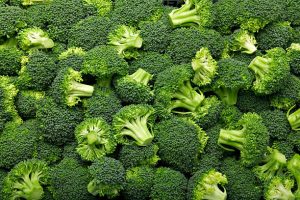
Long ago when I was in school studying anatomy, I had the privilege of dissecting a female body in a quiet setting. She looked to have been in her seventies or eighties when she died, frail and thin. What was interesting to me was the pronounced lump in the back of her neck, noticeable when we turned her on her belly. This is sometimes known to be called a “dowager’s hump” – a term I really hate.
This protrusion growing over C7/T1, is actually a postural issue created when the heavy skull sits in a forward head position. When the head doesn’t sit directly on top of the Atlas – the C-shaped first cervical vertebra – it glides forward; the body, in its wisdom, brings in connective tissue to cover the pronounced spinous processes of those vertebral bodies to hold the head in place.
Although that “lump” might look like new bone growing in a woman who might be osteoporotic, it’s actually soft tissue that would completely go away if her head was retracted directly on top of her spine, instead of protracted forward.
Depressed, or looking at your phone?
What I learned early in my training was that our bodies are plastic, able to conform to the shapes we often use. This malleable tendency is created by our connective tissue – that soft tissue that shapes us. Connective tissue has several different qualities: It can be liquid, like blood; hard, like bone; or, soft, like all of the tissues that wrap our muscles, ligaments, tendons and bones. This type of soft tissue actually holds us together, allowing us to be flexible.
When we “overuse” our muscles, for instance, our bodies target the area with more connective tissue, creating a rigidity that stabilizes and protects the area. Those places can feel “lumpy” and sensitive.
The good news…
The good news is that because CT is so malleable, we can change its shape easily by changing behavior. If your shoulders feel tight, losing normal movement, doing frequent shoulder rolls and other shoulder movements with mindfulness, will eventually break through the stiff CT, liquefying and softening it.
Because we live with the heavy weight of Gravity upon us nearly 24/7, it’s important to consider Ida Rolf’s idea of stacking the joints like blocks or McKenzie’s head retraction exercises, pulling the ears back to meet the shoulders.
As Charlie Brown reminds us, our bodies are influenced by our emotions ; we tend to flex forward when we feel sad, or open and expand when we feel happy and proud. Changing into an expansive body position can shift our mood into a positive place if we have have been feeling depressed. By now we should all realize that the body and mind communicate.
The magnificent Jane Goodall…
“It’s been an amazing journey, this life of mine. This planet has filled me with the wonder of all living things, great and small. We cannot ignore this Earth that surrounds us, that feeds us, shelters us, replenishes our bodies and souls and stretches our imaginations….Where animals, plants and air all care for us.
We’re all connected – people, animals and our environment. When Nature suffers, we suffer and when Nature flourishes, we all flourish.” -Jane Goodall
Jane Goodall just won the prestigious Templeton Prize, for a lifetime’s work on saving the lives of the chimps – our closest primate relatives. I’m putting this section about Jane Goodall into this blog because of her work. We can see the similarities between us and the chimps just by looking at how our structures have evolved. According to Jane, Chimps are similar to humans in these ways:
-They can live to be 60 years old;
-They use sounds, gestures and movements to communicate;
-They have sophisticated cooperation between one another;
-They understand suffering and emotions;
-They recognize themselves.
We share 98.6% of our DNA with the chimps, including similar brain structure and immunity. They form family relationships and suckle their young for 5 years.
There is a blurry line between us and the chimps, especially when we now see our posture folding into chimp shape as we drop into “tech neck”…

https://www.instagram.com/drrpotters/?hl=en
https://m.facebook.com/RisaPottersDC/

